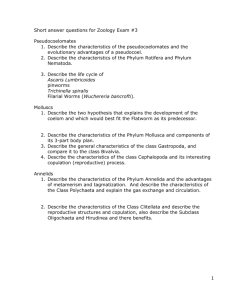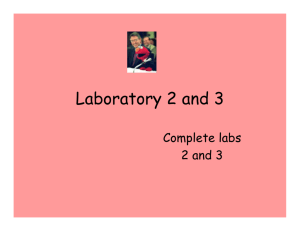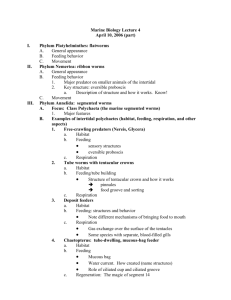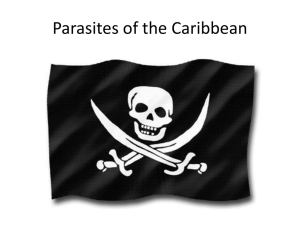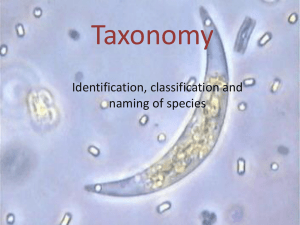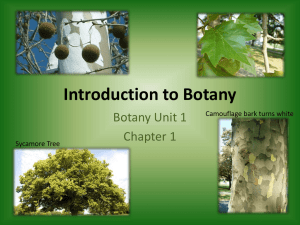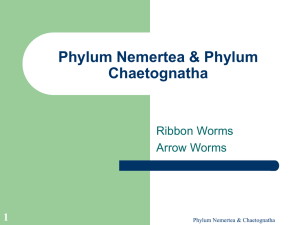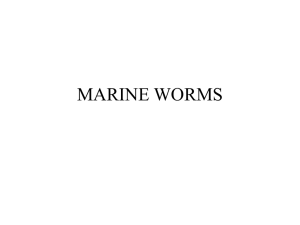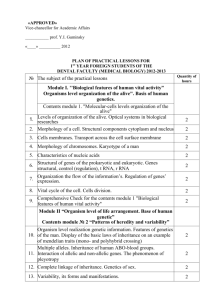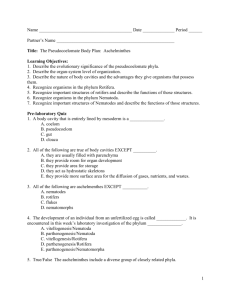Aschelminthes
advertisement
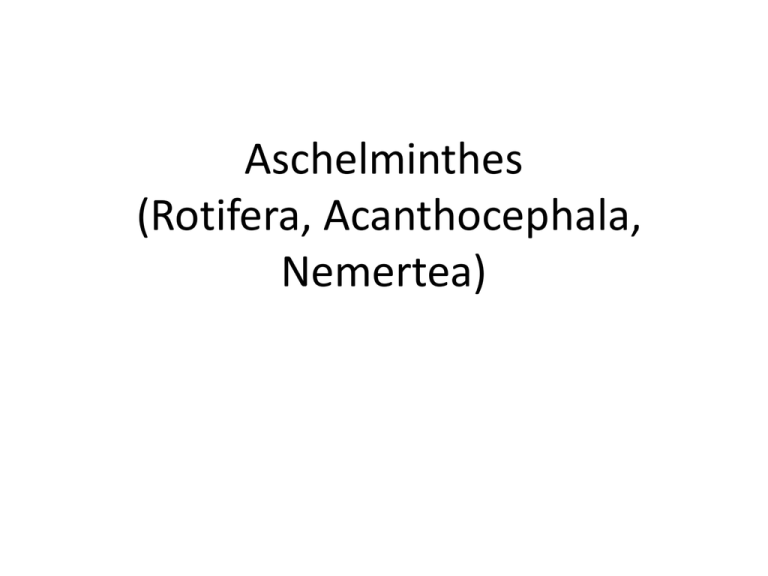
Aschelminthes (Rotifera, Acanthocephala, Nemertea) The Aschelminth body plan • Aschelminths have a pseudocoel which is never lined with mesodermal epithelia • Growth is through eutely (increased cell size rather than cell number) • They cannot regenerate lost body parts Phylum Rotifera • “wheel bearers” • Mostly found in freshwater environments, even in interstitial spaces • Mostly carnivorous, some are parasitic Body Plan (tube-within-a-tube) &trophi Phylum Rotifera • Rotifers have syncitial epidermis, and never molt • Cilia beat metachronally • These are important food sources for commercially important fish and crustaceans. • Utilized as models for research in senescence. • They can be good pollution indicators. • Rotifers exhibit parthenogenesis, not by fission or fragmentation. (Why?) Phylogenetic relationships Phylum Rotifera • Class Seisonidea • Ectoparasites in marine crustaceans • All gonochoristic • Class Bdelloidea • Free-living and mobile • Class Monogononta • Amictic females reproduce by parthenogenesis • Mictic females can produce haploid males that must do their jobs quickly; the eggs produced can withstand unfavorable conditions (cryptobiosis) and become amictic females Phylum Acanthocephala • • • • • Greek: Thorny-heads Parasitic worms Have bilateral symmetry 1150 species described Have proboscis used to pierce and hold onto host’s gut • Hosts are invertebrates, fishes, amphibians, birds, and mammals • Could be highly modified rotifers Phylum Acanthocephala • • • • • • Lack digestive tracts (parasitic existence ) Lack a circulatory system Have a nervous system Sexually dioecious Have complex life cycles involving many hosts Polymorphus spp. is capable of “brain-jacking” crustaceans to gain entry to its definitive host, a duck Acanthocephalan anatomy Leptorhynchoides thecatus from the GI tract of a largemouth bass. Phylum Acanthocephala • Acanthocephalans probably descended from free living marine mud-dwellers who turned parasitic because of intense predation from arthropods Phylum Nemertea • “Proboscis worms” or “ribbon worms”- w/ muscular, eversible proboscis inside the • Rhynchocoel, a fluid filled schizocoelous cavity • Mostly marine and benthic, with some freshwater species • Most are carnivorous and predatory • Possess a cerebral organ Phylum Nemertea Lineus longissimus from a tidepool Phylum Nemertea • Most species have pigmented photoreceptors and a few have balance organs (statocysts). • Defend themselves through burrowing, chemical defenses • Most are gonochronistic, or protandric hemaphrodites Nemertean Anatomy Phylum Nemertea • Class Anopla – Lack stylets, proboscis unarmed, mouth posterior to brain • Clas Enopla – Proboscis has stylets, mouth anterior to brain
